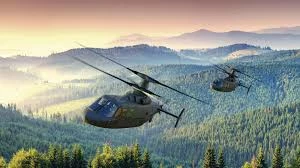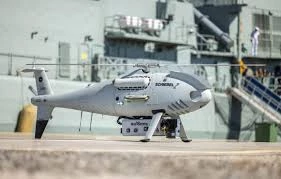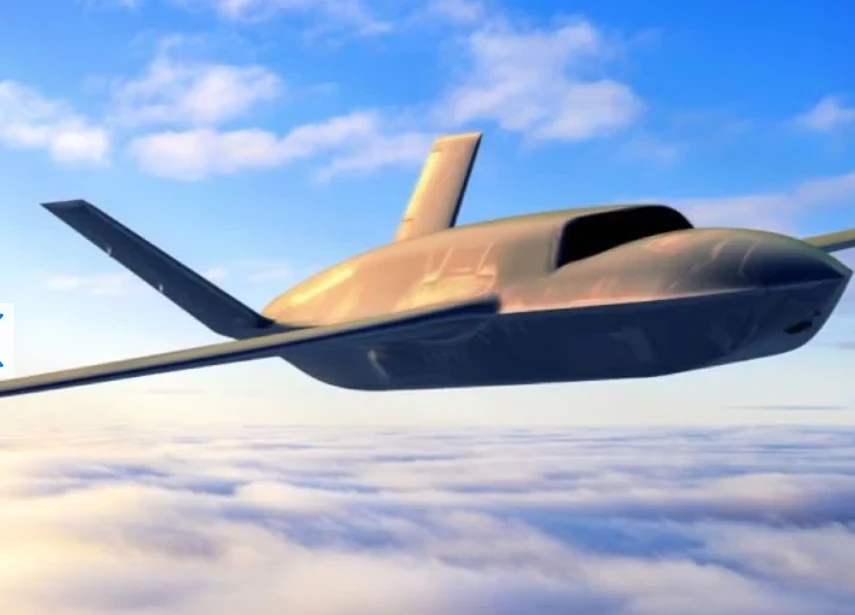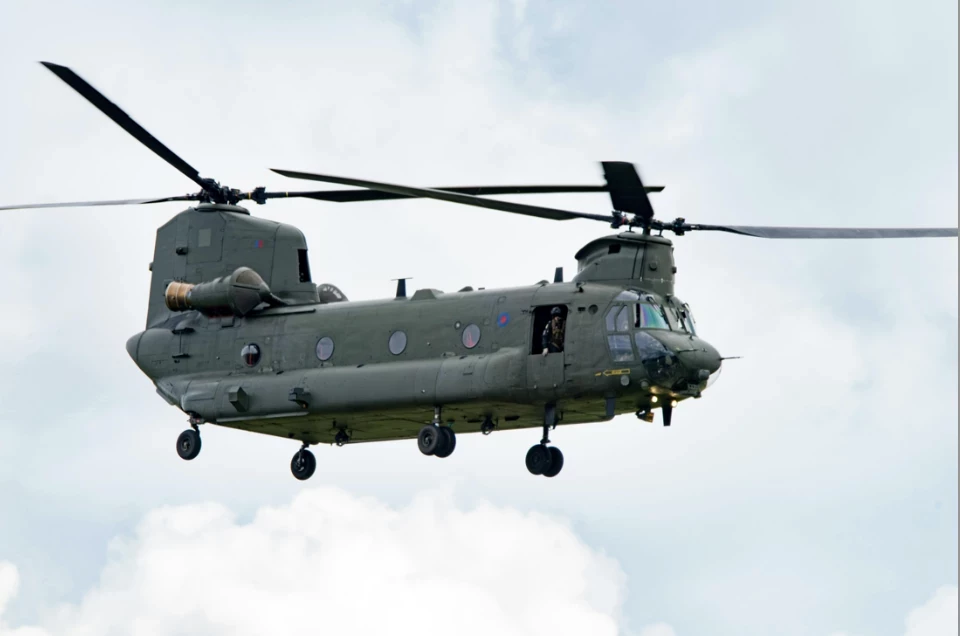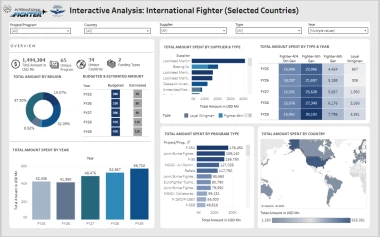What does the MiG-35 bring to air combat? Interview with Anastasia Kravchenko
The MiGs communications director, Anastasia Kravchenko, spoke to Defence IQ to discuss the prospects of this famous design-house and its latest brainchild.
Add bookmark“MiG is still here – and it will remain…”
Many observers in the aerospace domain are convinced that RSK MiG’s entire current MiG-35 (Fulcrum-F) project only exists in order to maintain the Fulcrum production line and to seal more exports.
Defence IQ: After all the mergers and reshuffling within the Russian defence and aerospace sector, will the MiG-brand survive under the United Aircraft Corporation [UAC] conglomerate, ROSTEC? We have not seen new MiGs on the international trade show circuit, so it has become harder to find information on this.
Kravchenko: Don’t worry, we are still here and we will remain here. MiG’s worldwide established brand and heritage will not be dissolved. That said, given the recent industrial restructure and consolidation in the Russian defence and aerospace industry, the design bureaus and the production plants of all the brands like Sukhoi, Ilyushin and Tupolev were taken under one unified state roof. But I should emphasise that UAC is not under the technology-holding ROSTEC. Where we undertake activities worldwide has firstly to do with our potential or existing customers.
Anastasia Kravchenko at the MiG-35 rollout
Defence IQ: What deliveries have been made in recent years?
Kravchenko: Our present director Ilya Tarasenko reported last year that RAC-MiG’s backlog stands at an equivalent of US$4 billion. The company has shipped all MiG-29SMT/UB land-based multirole fighters [under a 2014 order for 16 from the Russian aviation- and space force, VKS] and 45 MiG-29K/KUB naval deck-fighters under an Indian navy order and Russian navy order for 24. The final shipments took place last year.
RECOMMENDED: Is there a future for the SU-57?
Defence IQ: And, what’s now in the pipeline from Botinski Street [head office and design-bureau] and Lukhovitsy [production facility in Moscow Region, called PK-1]? What’s going on with your UAV development since the work that was undertaken on Skat, or with the future of the unique MiG-31 interceptor?
Kravchenko: Regarding unmanned platforms, our corporation is developing reconnaissance and combat unmanned aerial vehicles, ranging in weight in three classes from 1-5, 5-10 and 10-15 tons. Test models should be completed in the near future. Different types of vehicles will fit the task at hand. Engines for all the UAVs are being developed in Russia.
The successor or alternative to the MiG-31 is called the PAK-DP and may also serve as a basis for UAVs or be optionally unmanned. As Tarasenko said, this plane will defend the vast borders of our Motherland. It will be a brand new plane that will use brand new technologies, including operations in arctic conditions. Soon there will be more on the design-layout, so just wait and you’ll be surprised!
Defence IQ: Which means you’re now concentrating on fighters based on the MiG-29- and, therefore, the MiG-35-series?
Kravchenko: Correct, our main focus today is the MiG-35. Our test pilots and the Russian MoD are satisfied with the excellent results of the flight test campaign on this new advanced multirole fighter. That was launched on 26 January, 2017, and according to Deputy Defence Minister Yuri Borisov, he is aiming for an order of this the type for the Russian Air Force [VKS].
The MiG-35 advanced multirole fighter is under development to the VKS's specs but is designed for both domestic use and for export. It was unveiled at a large-scale presentation event in the presence of Russian Deputy Prime Minister Dmitry Rogozin, as well as defence attachés and reporters from 30 nations at PK-1 the following day.
Defence IQ: I remember. But it was too early for the organisation to take too many questions. Can you elaborate on its capabilities?
Kravchenko: The MiG-35 is designed for round-the-clock elimination of aerial and surface threats in any weather in the face of an enemy's active and passive ECM. It can carry up to seven tons of unguided and guided weapons to fulfil objectives like aerial threat interception, air-superiority, interdiction, suppression of enemy air-defences, or ground and naval threat elimination.
RECOMMENDED: Bulgaria's MiGs put procurement under the lens
It is designed with a service life of 6,000 flight hours or 40 years, both figures representing records for MiG aircraft. Replacing one of its engines can be completed in field conditions within 58 minutes – one of the best turnaround times in the world.
Defence IQ: What new features are the Mig-35 bringing to the battle?
Kravchenko: Compared to existing MiG-29s, the basic new features of the MiG-35 are going to include enhanced combat effectiveness owing to the cutting-edge multispectral fire control system and weapons, fly-by-wire control system, more powerful engines, extended range by means of a larger internal and external fuel capacity, in-flight refuelling, high survivability due to reduced radar- and lR- signatures, a more up-to-date self-defence suite, aircraft system redundancy and integral systems for health-monitoring and failure forecasting.
Defence IQ: Sounds impressive. What about the “other” MiGs – the previous MiG-29 family? Is it still available for production in tandem, such as for the existing order for Egypt? Or Serbia? Or Sudan?
Kravchenko: Of course. The MiG-35 is being derived from the MiG-29K multirole carrier-borne fighter, to become the spearhead of the MiG-29 new-generation derivatives family, which entered production in 2006.
The family is expected to be made up of at least six standardised versions: the MIG-29K and MiG-29KUB multirole carrier-borne fighters in the single-seat and two-seat configurations, respectively, and the single-seat MiG-35 and twin-seat MiG-35UB multirole tactical fighters. These all carry the new-generation avionics and weapons suites.
Then there are also the MiG-29M and MiG-29M2 multirole tactical fighters, standardised with the MiG-35 and MIG-35UB in terms of airframe and basic aircraft systems, but able to meet various specific requirements of some of the foreign customers – of which I am not authorised to go into details when it comes to the military-technical cooperation aspects. But of course, we are involved as long as some of our 30 user countries wish to modernise or if there is state approval to transfer material.
RECOMMENDED: INF Treaty: How strong are Russia's long-range strike capabilities?
Regarding potential exports of the MiG-35, you may be aware that our director has now mentioned Peru, Myanmar and Bangladesh, among others.
Defence IQ: It seems all the new MiGs we’ve spotted over the last few years are based on the same two-seater M2-airframe, bort-number ‘156’, in which I once flew with test pilot legend Pavel Vlassov.
Kravchenko: Ah! Did you know Pavel will be the new head of the Russian Cosmonaut Training Centre in a few days from now?
Anyway, you‘re right, each pair of those fighters features a 90 per cent or more degree of commonality, with the single-seater and twin-seater having the same design of their forward fuselage-sections and cockpit canopy. The single-seaters rear combat station is occupied by an extra fuel tank or additional avionics units if the customer requires.
Defence IQ: RSK MiG has been testing two MiG-29M/M2 prototypes for several years after I flew in the 156. I understand that was later reworked into the first aircraft carrying the MiG-35 title and it was clearly a different aircraft. It was unsuccessfully offered to India for their MMRCA competition. But since then, I can remember only a few new MiGs spotted with numbers 741 to 967. Can you elaborate on how that journey has developed to today?
Kravchenko: I’ve not been with the company too long, but I’ll try! The first new-built twin-seat MiG-29M after that aircraft you first flew in was on 24 December 2011 (bort number 747) and the single-seat MiG-29M (741) made its maiden flight on 3 February 2012. You have seen both repeatedly demonstrated at air shows under the current designation MiG-35 and they were used in tests and evaluation for new or planned export orders.
Concurrently, RSK MiG Corp. PK-1 was working on the earlier production planes – like the MiG-29M/M2 deliveries for export contracts. ln 2014, the Russian MoD ordered two further MiG-35 prototypes in accordance with the latest specifications. These two latest airframes – a MiG-35 single-seater (bort number 702) and MiG-35 twin-seater (712) – have been built and, as already mentioned, entered flight tests last year. These are the planes that were unveiled at the presentation in PK-1 in January 2017 and later at the MAKS 2017 air show in Zhukovsky in July.
Defence IQ: What were the differences between the two earlier and the two current ones?
Kravchenko: Outwardly, today’s 702 and 712 versions do not differ much from the 741 and 747 flown in 2011-2012. All are representative of various prototypes of the MiG-35D (twin-seat) and MiG-35S (single-seat), respectively. The true innovations are inside rather than visible. The difference is based on the use of a more advanced integrated passive electro-optical system, which our former director Sergey Korotkov [now UAC-designer-general and vice-president for innovation] described as “multispectral” because it uses sensors operating in multiple wavebands of the light spectrum. While not getting into specifics, he also revealed the MiG-35 will be able to use future modern laser systems.
Defence IQ: Those are the passive systems, but the MiG-35’s radar is not an active AESA-type, is it?
Kravchenko: It has no AESA radar yet. The current radar is the Zhuk-M with a mechanically steered antenna. However, its developer [Phazontron-NIIR] is working on AESA versions, called the Zhuk-A/AM, which possess more than 1,000 solid-state transceiver-receiver modules.
RECOMMENDED: How capable is the S-400 missile system?
ColGen Viktor Bondarev [who until Septemeber was the Russian VKS commander-in-chief and is the current chairman of the Defence and Security Committee of the Russian Federation Council – the ‘upper house’ of Russia's parliament], said he is satisfied with the Zkuk-M’s advertised range of 160 km and that the MoD will consider and buy these more advanced radars when they become available.
Defence IQ: How many MiG-35s for the Russian MoD order are we talking about? The very same ColGen Bondarev mentioned to [Russian news agency] TASS that it would be 24…
Kravchenko: Again, the MiG Corporation has been developing the MiG-35 multirole fighter and its MiG-35UB combat trainer version under a government-placed order in line with a governmental resolution dated to 25 December 2014. All the work, and the successfully concluded test-campaign was done in accordance with the requirements specification issued by the Russian MoD.
MiG-35. Source: Shutterstock
Former director Korotkov had confirmed an incoming contract for the MiG-35 from the MoD, but we would rather not specify how many aircraft that would cover. According to him, it was expected to be covered by the governmental armament acquisition programme for 2018-2025, and that the Russian military had made a tentative decision. So the formal contract for a batch of production MiG-35s is to be signed in 2018, as confirmed by Bondarev’s recent statement. He already spoke publicly to TASS on his intentions to re-equip the ‘Swifts’ air display group with MiG-35s.
Defence IQ: Only time will tell if the MiG-35 will be successful, since the Fulcrum-F may be RSK-MiG’s last hope of regaining some of its lost market share on the international fighter market. Anyway, thank you for some interesting and confident insights!
RECOMMENDED: Hypersonic missiles: What are they and can they be stopped?
Kravchenko: Thank you for your interest. Let me conclude by saying we are quite confident. President Putin spoke at a video conference a few days prior to the official roll-out, and said, “This is a genuinely unique and promising aircraft – 4++, you could say, or very close to being fifth generation. I hope very much that this fighter will contribute substantially to bolstering our Air Force and Aerospace Forces. The plane also has good export potential, given that more than 30 countries actively operate the earlier MiG-29.”












